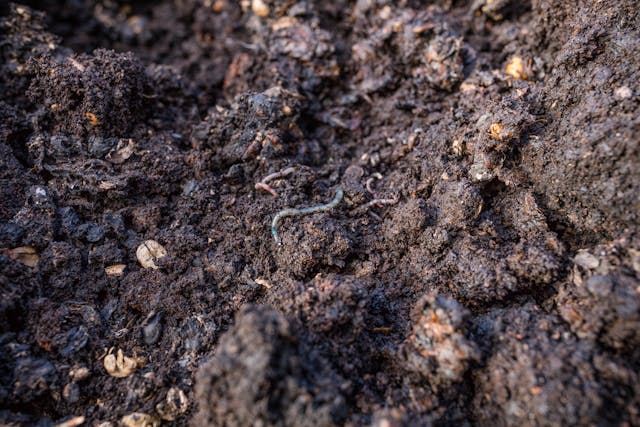The Chornobyl nuclear disaster of 1986 stands as one of the most catastrophic events in human history, casting a shadow of devastation over the surrounding landscape that endures nearly four decades later. Evacuations were swift for humans, but the flora and fauna persisted amidst the lingering radiation, painting a haunting portrait of resilience amidst adversity.
A groundbreaking study led by researchers from New York University has shed light on the enduring legacy of chronic radiation exposure from Chornobyl on the region’s microscopic inhabitants. Contrary to expectations, the genomes of microscopic worms dwelling in the irradiated soil have not shown significant damage, sparking intrigue and cautionary tales alike. While this revelation does not imply safety within the region, it hints at these organisms’ remarkable adaptability and resilience in the face of extreme environmental pressures.
In recent years, scientific inquiry into the effects of chronic radiation on wildlife within the Chornobyl Exclusion Zone has intensified. The discovery of physical and genetic disparities among animals residing in this isolated pocket of Ukraine has spurred contemplation regarding the intricate interplay between radiation and DNA integrity. Sophia Tintori, a postdoctoral associate at NYU’s Department of Biology and the study’s lead author, underscores the profound uncertainties surrounding the disaster’s impact on local ecosystems. The selection pressures imposed by the sudden environmental upheaval raise profound questions regarding the evolutionary responses of various species to ionising radiation.
To unravel this biological problem, Tintori and her team turned their attention to nematodes, diminutive worms renowned for their simplicity of genome and rapid reproductive cycles. Matthew Rockman, a professor of biology at NYU and the senior author of the study, extols the virtues of nematodes as invaluable tools for elucidating fundamental biological processes. Their ubiquity and rapid life cycles render them ideal candidates for probing evolutionary dynamics in the wake of ecological disruption.
The allure of the Chornobyl Exclusion Zone, teeming with unexpected vitality amidst desolation, beckoned the researchers on an expedition fraught with both peril and scientific promise. Equipped with Geiger counters to gauge radiation levels and clad in protective gear, they embarked on a quest to collect nematode specimens from various locales within the irradiated landscape. From the verdant foliage to decaying organic matter, samples were meticulously gathered, representing a spectrum of radiation exposure ranging from nominal levels akin to urban environments to perilously elevated doses reminiscent of outer space.
The subsequent analysis unfolded within the confines of a makeshift field laboratory in the heart of Chornobyl, where hundreds of nematodes were meticulously extracted from their terrestrial confines. These specimens were then transported to a temporary sanctuary in Kyiv, where painstaking efforts ensued to isolate and cultivate distinct worm populations. Amidst the microscope’s gaze, the intricate tapestry of nematode life in Chornobyl unfurled, offering glimpses into the mysteries of adaptation and survival in a radioactive crucible.
Upon their return to NYU’s laboratories, the researchers embarked on a meticulous interrogation of the nematode genomes, seeking elusive traces of radiation-induced genetic aberrations. Despite exhaustive analyses employing diverse methodologies, the anticipated signature of radiation damage remained conspicuously absent. Tintori, while acknowledging the limitations of their findings, underscores the astonishing resilience of nematodes in the face of extreme adversity. The enigmatic absence of radiation-induced genetic lesions prompts speculation regarding the intrinsic defences harboured by these diminutive organisms against genomic assaults.
Undeterred by this scientific impasse, the researchers devised innovative experiments to probe the mechanisms underpinning the nematodes’ apparent resilience to DNA damage. By scrutinising the growth dynamics of distinct worm lineages and subjecting them to various genotoxic insults, they sought to unravel the intricacies of DNA repair mechanisms in real time. While discernible differences in sensitivity to DNA damage were observed among nematode lineages, these variations did not correlate with the ambient radiation levels at their respective collection sites. This intriguing revelation challenges conventional assumptions regarding the adaptive responses of organisms to chronic radiation exposure, underscoring the complexity of evolutionary dynamics in irradiated environments.
The implications of these findings extend far beyond the realm of nematode biology, offering compelling, tantalising insights into the intricacies of DNA repair mechanisms and natural variation in higher organisms, including humans. Tintori envisions leveraging the resilience of nematode strains to elucidate the nuanced interplay between genetic predispositions and environmental carcinogens in shaping cancer susceptibility. By dissecting the characteristic responses of individual organisms to DNA-damaging agents, researchers aspire to unravel the intricate tapestry of cancer risk factors, paving the way for personalised interventions and targeted therapies.
In essence, the humble nematodes of Chornobyl serve as unwitting sentinels of resilience amidst adversity, offering profound lessons in adaptation and survival in the face of ecological upheaval. As humanity grapples with the enduring legacy of nuclear disasters, their plight serves as a poignant reminder of the resilience encoded within the very fabric of life itself. Through the lens of scientific inquiry, we glimpse the intricate dance of evolution unfolding amidst the wreckage of human folly, heralding a future illuminated by the resilience of life in all its myriad forms.
More information: Sophia C. Tintori et al, Environmental radiation exposure at Chornobyl has not systematically affected the genomes or chemical mutagen tolerance phenotypes of local worms, Proceedings of the National Academy of Sciences. DOI: 10.1073/pnas.2314793121
Journal information: Proceedings of the National Academy of Sciences Provided by New York University








